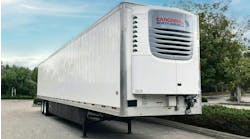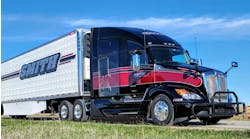A significant increase in the quality of frozen fish and shellfish can be achieved by blast-freezing fish to an ultra-low temperature directly after they are caught and then using controlled thawing.
The shift to lower-temperature freezing machinery is growing rapidly around the world. Blast-freezing yellowfin tuna and other high-value fish to an ultra-low temperature of –60º C (–76º F) substantially reduces transportation costs as the fish can be transported by container ship rather than air-freighted.
Tests have also shown that shelf life is increased when tuna is frozen to –60º C (–76º F) and thawed, at a time of the customer’s choosing, in a controlled environment.
As part of its acquisition of Norfrig Equipment, Klinge Corporation now offers refrigerated containers for blast-freezing cargo from –20º to –60º C (–4º to –76º F). Its Model CBU-30 blast freezer is used to blast-freeze yellowfin tuna as well as other types of high-value fish.
The CBU-30 is designed primarily for the transportation sector and functions equally well as storage for frozen cargo. The blast freezer ensures full airflow, even in loads with very high cargo internal pressure drops.
Henrik Klinge, president and chief executive officer of Klinge Corp, said, “The unit’s evaporator fan is designed to press the air through the load to ensure even temperatures throughout the load. Many standard units are not equipped with an evaporator fan designed to accommodate cargoes with high-pressure drops.”
Accompanying the blast freezer is Klinge Corp’s Quick Thaw Unit Model QTU-42 (produced by Morep). The unit stores the product at its ideal process temperature with minimal manual operation.
The QTU-42 has a series of probes that monitor the thawing process by transmitting real-time temperatures to a microprocessor, which then analyzes them. The microprocessor calculates the rate of temperature rise in the cargo and adjusts temperature to provide the thaw rate without surpassing predetermined core and surface temperatures.
“This very controlled thawing method optimizes tuna quality by ensuring that the natural red pigmentation of tuna is maintained much longer and that there is minimal drip-loss,” said Klinge.
The QTU-42 can be used in existing rooms or insulated containers.
For more information, call Jason Flynn at +1-717-840-4500 ext 162 or e-mail [email protected].



